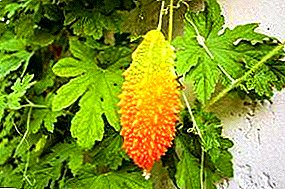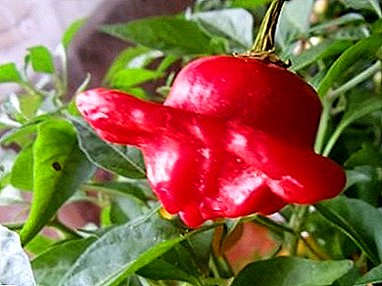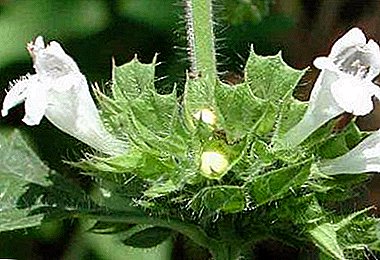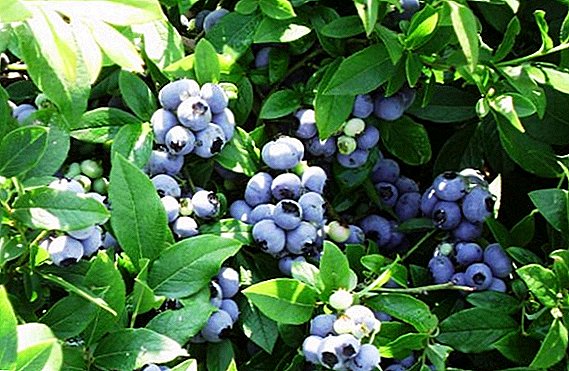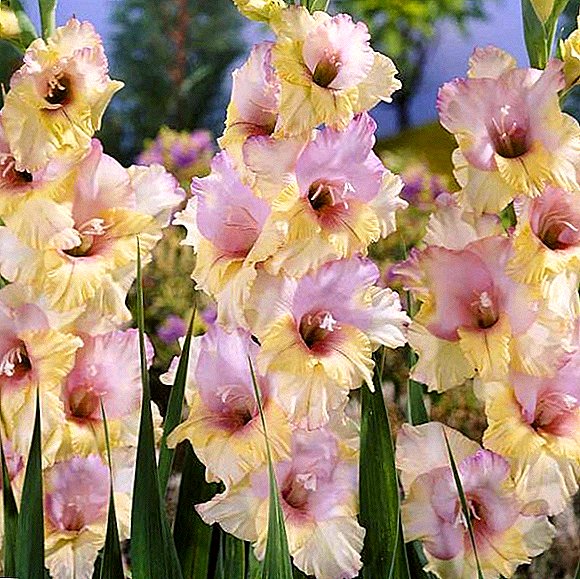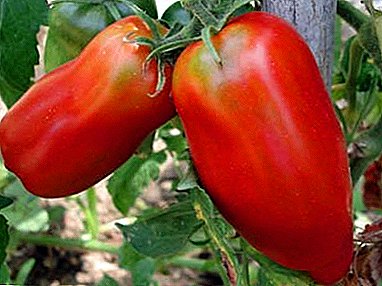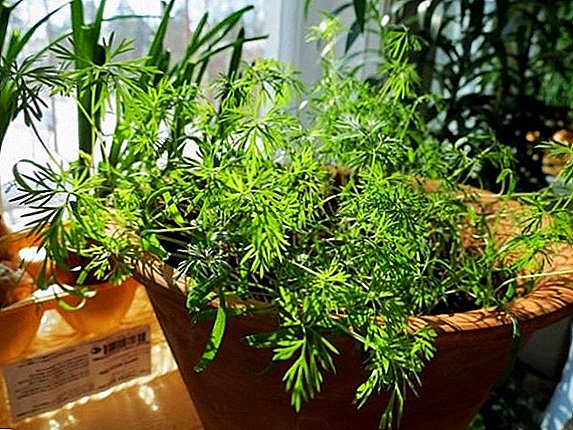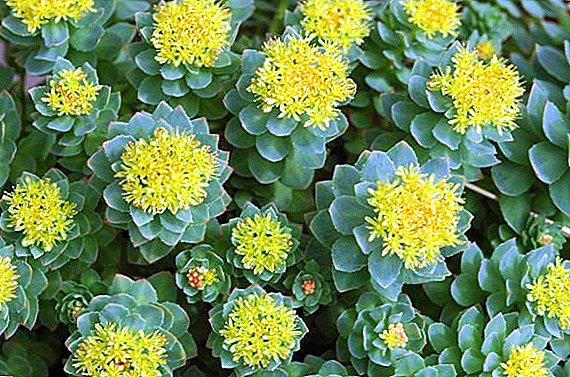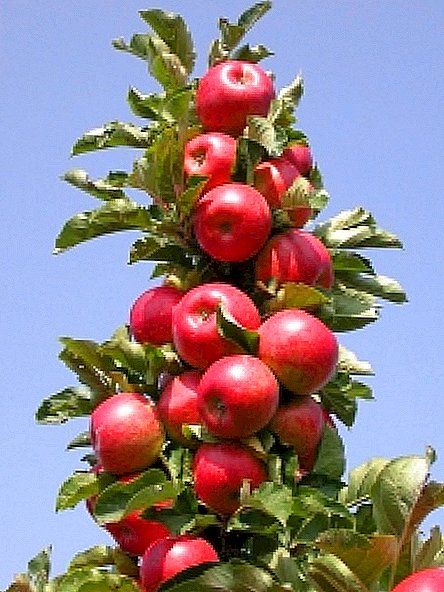
Kolonovidnye apple - a very young variety of fruit tree. This type of fruit trees looks beautiful and unusual, while it has large and tasty fruits.
Crown-shaped apple trees are very capricious, climatic conditions and soils greatly influence their fruiting and growth, as well as the characteristics of their care. Let us dwell on a very important kind of tree care - pruning them.
What are the benefits of trimming?
All garden trees, regardless of their age or variety, periodically need pruning. Proper pruning involves the formation of a beautiful crown, the ratio of branches, the development of the entire seedling, its durability and high yield.
Due to the correct pruning, it is possible to achieve maximum distribution of moisture and substances necessary for the development throughout the tree, lighting is also regulated, the correct ratio of growth and fruiting is achieved.
Without the reasonable intervention of a caring gardener, the crown of the tree will become thickened, which will give a bad harvest and poor quality fruit.
Now about the features of trimming
It is worth remembering that pruning trees produce a sharp garden knife or a special sharp shears. When cutting off branches, pay attention to the fact that spikes do not remain, and competing shoots are removed by cutting off "into a ring."
Any pruning is perceived by trees not painlessly, therefore, it is very important treat wounds immediately after trimming or paint over with oil paint.

Broken, dry and damaged branches are removed during pruning. The poorly developed fruit formations are also pruned in order to regulate the load on the tree. With the onset of fruiting, pruning is shortened and the growth of shoots is increased while subsiding, and the shoots are immediately removed at the base of the shtamb, as it drains the tree.
Pruning apples, like any other tree, is carried out, including for the formation of a beautiful crown, but it is not necessary to adhere to any template.
To form the crown should begin on young seedlings. For a start, you need to look at what kind of fury is laid in the sapling. Be sure, at the same time, it is necessary to pay attention to the radius of the angle of discharge and inclination of the side branches from the central trunk (this angle should be approximately 40-45 degrees).
There are many trimming techniques.
These techniques are used in the formation of the crown of fruit trees. Among them: kerbovka (bark incisions) - is used to improve the germination of the kidneys; pruning branches - for the formation of beautiful branches; bending back shoots with tying up branches; plucking tops of strongly growing shoots.
Colony apples require special pruning., as they have an unusual structure and a peculiar growth of the branches. There are pruning of the crown shoot and pruning of the side shoots. Let us dwell on each type of pruning in more detail.
Crop Shot
One of the most vulnerable places of the columnar apple is its tip. Because of its unusual structure, the top of this fruit tree in winter time tends to freeze often.
As a rule, the frost at the top, where the crown is, is much stronger, so frequent freezing of the top part of the apple tree occurs. This leads to a ramification of the upper part of the fruit tree, and the appearance of 2-3 trunks.
In this case, when spring comes, it is very important for a gardener to determine a strong vertical shoot, which will be a continuation of the trunk. The remaining branches are cut, leaving 2-3 buds at each base.
The upper part of the deceased apical kidney is removed before escapingdefined by the future trunk.
To prevent branching, gardeners recommend not to remove the top of the columnar tree, but in the winter it is better to hide it from frost.
Pruning side shoots

Side shoots of the columnar apple are clamped at the beginning of summer in order to preserve the shape of the “column”. Therefore, with their active growth, in early June, the lateral shoots that have appeared should be cut off.
For the winter, shoots are hidden from the cold, while carefully protecting the flower buds from frosting, especially the lower ones. Protect the tree from frost by wrapping it with any insulation, you can even use paper.
Colonid Apple Care
Kolonovidnye apple, like all fruit trees, require careful maintenance. The word care should be understood as comprehensive tree care, starting from the seedling period to the period of sustained fruiting.
Care includes the provision of the tree with the necessary amount of moisture, adequate nutrition and the right lighting (the tree needs free space, the formation of crown and trunk, protection from pests and various diseases).
It is also interesting to read about the care of autumn varieties of apple trees.
Watered Apple
Moisture is the basis of nutritionnecessary for the growth and development of the tree. Lack of moisture in the soil, adversely affects the development, frost resistance and durability of not only fruit, but any other tree.
But, and excess water is very harmful: in this case, the soil will not be able to receive the necessary amount of oxygen, and as a result, it accumulates harmful products, which may even lead to the death of the tree. Irregular moistening is especially undesirable and harmful, i.e. alternation of dry soil periods with abundant irrigation.
Immediately after planting, the tree must be watered at the rate of two or three buckets per root. In the first year of planting, with each successive watering, about four to five buckets of water should be poured under the tree. Worth remembering that the best time for watering is evening: at night the moisture does not evaporate so much.
More useful for irrigating our apple trees is rainwater and melt water, so it should be collected whenever possible. Watering with excessively cold water can have a bad effect on the growth and well-being of apple trees, water should not be colder, the temperature of the soil.
During irrigation, it is impossible to pour water only in one place, this may entail exposure of the roots, it is necessary to moisten the entire near-stem part of the soil evenly.
Moisture should saturate the earth to a depth of 80-100 cm, you should not allow the creation of a crust on the ground, which may appear after the end of irrigation. To saturate the earth with oxygen, after watering, it is imperative that you loosen the soil.
We protect the tree from pests
It is very important, when caring for plants, to remember the need for them protection against pests. When various insects appear, respectively, the diseases produced by them appear, the trees begin to ache, which is capable of provoking even the death of the plant.
There are many types of various pests. Among the more common are the following: codling moth, silkworm (unpaired or ringed), goldtail beetle, hawthorn, apple ermine moth, slimy cherry sawfly, green aphids, leafworm, flowering weevil, honeyfly, spider mite, crisps and many others.
One pest infects the flower and the fruit itself, the other - the leaves of the tree, the third - the trunks and branches. There are a number of tools to help protect against pests and plant diseases, with their help it is possible to prevent, scare away or destroy a particular disease.
Depending on what kind of pest it is, and on the type of the disease, there are various means of combating them, such as: karbofos - 0.3% concentrate, bitoxybacillin, dendrobatsillin, three percent trichloror, 10% flozalon
Treated with trees. In addition, there is a proven popular method - spraying trees with tobacco decoction. The solution of this tool is taken in the ratio of 1 to 10, and recognized as effective for pest control.
In general, there are so many drugs that are excellent against pests. It is very important that when using these chemicals, carefully check whether the useful life has not expired, since the use of such a drug may be, firstly, powerless in the fight against a certain pest, and secondly - to harm the plant itself.
I would like to remind that there is a variety of such pests as forest and field hares and mice. Do not forget about them, because they are notable garden pests, they are capable of causing significant harm to any tree, and, accordingly, to our columnar apple. In the fight against them will help you branches of ordinary needles, which can enclose a tree around the trunk.


